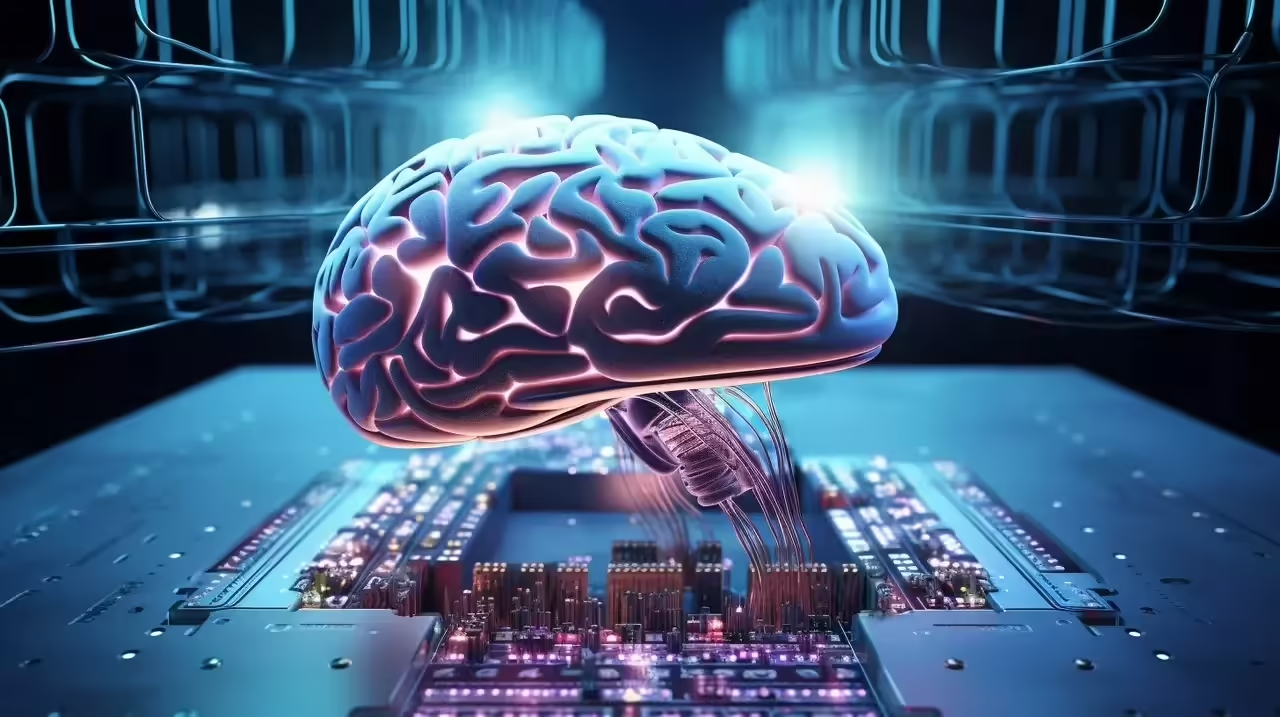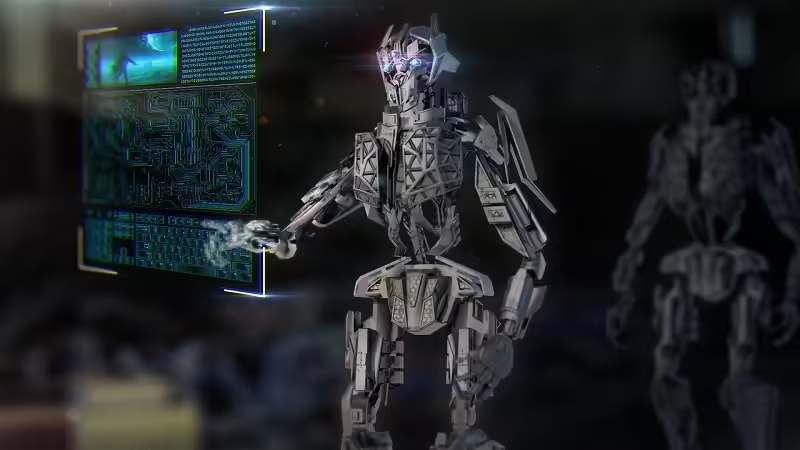
In a groundbreaking convergence of neuroscience and technology, scientists have achieved a remarkable feat – the creation of a computer system powered by human neurons. This innovative development marks a significant milestone in the exploration of the brain-computer interface, unlocking new possibilities for the future of computing and our understanding of neural networks.
The Marriage of Neuroscience and Technology
The project, spearheaded by a team of interdisciplinary researchers, involved the integration of living human neurons with a computer system. By leveraging advancements in neurobiology and computer science, the team successfully bridged the gap between the biological and artificial realms. This ambitious undertaking aimed to harness the immense processing power and adaptability of the human brain to enhance computational capabilities.
Neuromorphic Computing: A New Era
The resulting computer system is a testament to the field of neuromorphic computing, which seeks to mimic the architecture and functionality of the human brain. Unlike traditional computers that rely on binary code and transistors, this novel system processes information using networks of interconnected neurons, emulating the brain’s ability to learn and adapt.
How It Works
The human neurons, derived from stem cells, were carefully cultured and integrated into the computer architecture. This hybrid system allows for a dynamic interaction between biological and artificial components. The neurons communicate with each other through synapses, forming neural circuits that can process information in a manner akin to the human brain.
Applications and Implications
The implications of this technological breakthrough are vast and extend across various domains. In healthcare, this development could revolutionize the study of neurological disorders, providing a platform for more accurate modeling and drug testing. The computer’s ability to adapt and learn could also pave the way for advancements in artificial intelligence, enabling machines to exhibit a level of cognitive flexibility previously unseen.
Ethical Considerations
As with any groundbreaking technology, ethical considerations come to the forefront. Questions regarding the ethical use of human neurons, privacy concerns, and the potential for unintended consequences must be carefully addressed. Striking a balance between scientific progress and ethical responsibility will be crucial as this technology continues to evolve.
Challenges and Future Directions
While the achievement of a computer powered by human neurons is undeniably groundbreaking, numerous challenges lie ahead. Scaling up the system, improving computational efficiency, and addressing ethical concerns are just a few of the hurdles that researchers must navigate. The collaboration between neuroscientists, ethicists, and technologists will be essential to ensure the responsible development of this transformative technology.
Neuroscientific Advancements: Unlocking the Potential of Human Neurons
In the ever-evolving landscape of neuroscience and technology, a groundbreaking convergence has emerged, pushing the boundaries of what was once thought possible. At the heart of this revolution is the integration of human neurons into a computer system, a feat made possible by significant advancements in neuroscientific research.
To comprehend the significance of this breakthrough, it is crucial to delve into the foundational neuroscientific principles that set the stage for the seamless integration of human neurons. Neuroscience, the study of the nervous system and the intricate workings of the brain, has long been a frontier of exploration for scientists seeking to unravel the mysteries of cognition and consciousness.
The journey begins with an understanding of the fundamental building blocks – neurons. These specialized cells are the primary functional units of the nervous system, responsible for transmitting information through electrical and chemical signals. The intricacies of neuronal communication, governed by synapses and neurotransmitters, form the basis of our cognitive processes.
Advancements in neurobiology, particularly in the cultivation of neurons from stem cells, have played a pivotal role in this revolutionary development. Scientists have mastered the art of deriving neurons from stem cells, paving the way for the creation of a hybrid system where living human neurons seamlessly coexist with artificial components.
This integration is not a mere technological stunt; it is a testament to the progress in our understanding of neural networks. Neural networks, inspired by the complex interconnections of the human brain, have become a focal point in the development of neuromorphic computing. Unlike traditional computers that rely on binary code and rigid circuits, neuromorphic systems mirror the brain’s capacity to adapt and learn from experiences.
The integration of human neurons into a computer system represents a leap forward in the field of neuro-computing. It opens up new possibilities for artificial intelligence, where machines can mimic the cognitive processes of the human mind. The dynamic nature of these neural networks allows for enhanced problem-solving, pattern recognition, and adaptability – qualities that were once exclusive to living organisms.
The Birth of Neuromorphic Computing: A Paradigm Shift in Technology
In the ever-accelerating evolution of computing, a new paradigm has emerged, challenging the very foundations of traditional binary-based systems. This revolutionary shift is encapsulated in the concept of neuromorphic computing, a groundbreaking approach that seeks inspiration from the human brain to redefine the landscape of artificial intelligence.
At its core, neuromorphic computing represents a departure from the binary language that has been the bedrock of conventional computers. Instead of relying on the binary on-off states of transistors, neuromorphic systems draw inspiration from the intricate workings of the human brain. This departure marks a paradigm shift from rigid, rule-based computing to a more flexible and adaptive model.
The human brain, with its billions of neurons and trillions of synapses, is an unparalleled marvel of complexity. Neuromorphic computing endeavors to replicate this complexity by constructing artificial neural networks that closely resemble the architecture of the brain. These networks, composed of interconnected nodes, or artificial neurons, process information in a manner akin to the parallel processing capabilities of the human mind.
What sets neuromorphic computing apart is its ability to mimic not just the structure but also the function of the brain. Traditional computers excel at executing predefined tasks, following strict algorithms. In contrast, neuromorphic systems possess the capacity to learn from experience, adapt to new information, and evolve over time. This cognitive flexibility marks a significant departure from the deterministic nature of conventional computing.
The potential impact of neuromorphic computing on artificial intelligence is nothing short of revolutionary. Machines endowed with neuromorphic capabilities can transcend the limitations of rule-based programming, opening the door to a new era of intelligent machines. These systems can excel in tasks that demand pattern recognition, decision-making in complex environments, and learning from ambiguous or unstructured data – all hallmarks of human cognition.
One of the key advantages of neuromorphic computing lies in its efficiency. By mimicking the brain’s parallel processing, these systems can handle massive amounts of data simultaneously, offering a potential solution to the computational bottlenecks faced by traditional computers in the era of big data and machine learning.
As we delve deeper into the realm of neuromorphic computing, the possibilities are as vast as they are transformative. From advancements in robotics and autonomous systems to breakthroughs in medical diagnostics and personalized computing, the impact of this paradigm shift reverberates across diverse sectors.
Machine Learning Redefined: How Adaptive Systems Will Transform Industries
Cognitive flexibility in machine learning presents a game-changing prospect for the financial industry. The adaptive learning mechanisms enable algorithms to navigate complex market dynamics, analyze vast datasets in real-time, and make informed decisions based on ever-changing economic landscapes. This newfound capability enhances risk management, portfolio optimization, and algorithmic trading, ultimately reshaping the way financial institutions operate.
Healing with Precision: Revolutionizing Healthcare Diagnostics
In healthcare, the impact of cognitive flexibility is profound. Adaptive systems can process vast amounts of medical data, interpret complex patterns, and adapt diagnostic and treatment strategies in response to new information. This transformative capability holds the potential to redefine disease diagnosis, treatment planning, and personalized medicine, leading to more accurate and efficient healthcare interventions.
Smart Manufacturing: Adaptive Production Lines
Manufacturing stands on the verge of a technological revolution as adaptive machine learning systems bring cognitive flexibility to production lines. These systems can optimize manufacturing processes in real-time, adjusting to variations in demand, supply chain disruptions, and equipment malfunctions. The result is increased efficiency, reduced downtime, and a more responsive and agile manufacturing ecosystem.
Fraud Detection and Security: A Dynamic Approach
The financial industry is not the only sector benefiting from the adaptive capabilities of machine learning. In cybersecurity and fraud detection, cognitive flexibility allows algorithms to continually evolve and adapt to new threats. This dynamic approach enhances the robustness of security systems, providing a proactive defense against ever-changing cyber threats.
Human Resources and Talent Management: Enhancing Workforce Dynamics
In the realm of human resources, cognitive flexibility in machine learning is transforming talent management. Adaptive systems can analyze employee performance data, identify evolving skill requirements, and recommend personalized training programs. This not only optimizes workforce efficiency but also ensures that organizations stay ahead in a rapidly changing professional landscape.
Environmental Monitoring: Adapting to Ecological Shifts
The application of cognitive flexibility extends to environmental monitoring, where adaptive machine learning systems can process data from sensors, satellites, and other sources to adaptively respond to ecological shifts. This capability is critical for managing environmental challenges such as climate change, biodiversity conservation, and natural disaster prediction.
Unraveling the Mysteries of Neurological Disorders: Precision Medicine at the Forefront
Neurological disorders, ranging from Alzheimer’s to Parkinson’s disease, have long presented formidable challenges to researchers and clinicians. The hybrid computer system, powered by human neurons, introduces a novel approach to studying these disorders. Its adaptive learning mechanisms enable the system to model the intricacies of neural networks, providing researchers with a dynamic platform to simulate and understand the complexities of neurological conditions at unprecedented levels of detail.
Personalized Therapies: Tailoring Treatments to Individual Neurological Profiles
The adaptability of the hybrid system is particularly valuable in the pursuit of personalized medicine for neurological disorders. By analyzing patient-specific data, the system can simulate the response of individual neural circuits to different treatment options. This approach has the potential to usher in a new era of tailored therapies, optimizing treatment plans based on the unique neurological profiles of patients.
Accelerating Drug Discovery: A Leap Forward in Efficiency
Drug development is a time-consuming and resource-intensive process, often marked by high rates of failure. The integration of human neurons into computer systems accelerates drug discovery by providing a more accurate and efficient platform for testing potential therapeutics. The adaptive nature of the system allows for real-time feedback on drug efficacy and potential side effects, reducing the time and cost associated with traditional trial-and-error approaches.
Virtual Clinical Trials: Redefining Drug Testing Protocols
The hybrid system’s ability to emulate human neural responses opens the door to virtual clinical trials, a revolutionary concept in drug testing. By simulating the effects of medications on human neurons, researchers can predict how drugs will interact with the nervous system without the need for extensive animal testing or human trials. This not only expedites the drug development process but also enhances safety by minimizing risks associated with traditional testing methods.
Targeting Neurodegenerative Diseases: A Focus on Alzheimer’s and Parkinson’s
Neurodegenerative diseases, such as Alzheimer’s and Parkinson’s, present complex challenges due to the progressive nature of these conditions. The hybrid system offers a platform to model and test interventions for these diseases in a dynamic, real-time environment. This could lead to breakthroughs in developing therapies that slow or even reverse the neurodegenerative processes, transforming the landscape of treatment options for these debilitating disorders.







